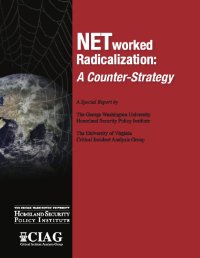By Tapia, Daniel; Warren, Kristin; Burns, Jacqueline Gardner; Holynska, Khrystyna; Reimer, Jordan R.
From the document: "Racially and ethnically motivated violent extremism is becoming an increasingly common occurrence in the United States. Racially and ethnically motivated violent extremist (REMVE)-related terrorism has consequences beyond loss of life: It undermines the sense of safety that targeted groups feel in their country and unravels the social fabrics of trust that are necessary for society to function. Further still, REMVE attacks can motivate other like-minded attackers to follow up with their own attacks, as was apparently the case with the May 14, 2022, mass shooting in Buffalo, New York, by a self-avowed, internet-radicalized white supremacist whose manifesto drew heavily from the March 15, 2019, Christchurch mosque mass shootings, which also inspired a mass shooting in El Paso, Texas. Two key challenges for those who observe online spaces in which radicalization occurs are the sheer volume of data and the idiosyncrasies of online communities. Website-specific language and memes are difficult to track and parse; even if emerging terms are detected, defining them can be difficult."
Rand Corp. 2023. 102p.






